News
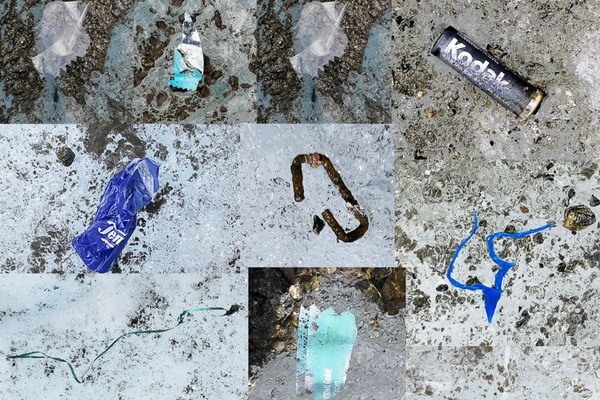
Microplastics in the Alps
Plastic pollution continues to threaten our health and our most precious landscapes. The latest findings show that microplastics can even be found on the highest Alpine peaks.
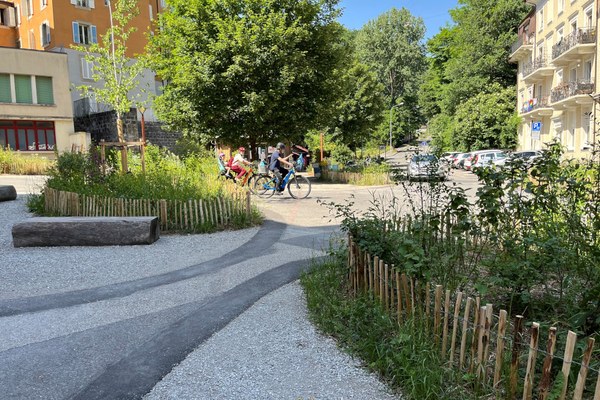
Desealing land in the Alpine region
Soils are among our most important resources. CIPRA's new project, entitled Ground:breaking, shows why desealing land is of benefit to everyone and what is needed at political, legal and local levels in the Alpine region to achieve this.
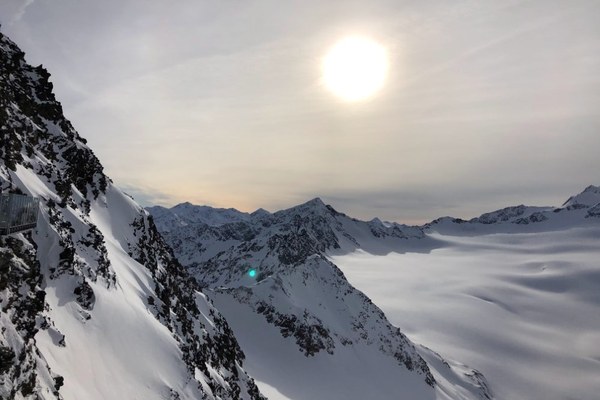
No glacier marriage in Tyrol
Finally it’s official: the plans for the world’s largest glacier ski area are history. In November 2022, the Tyrolean federal state government rejected the planned merger of the glacier ski areas in Austria’s Ötztal and Pitztal valleys.
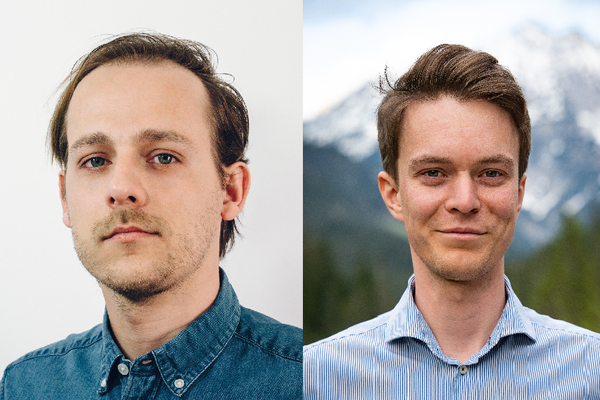
Point of view: Let’s create an “Alpine Plan” for all Alpine regions!
The Bavarian Alpine Plan celebrates its 50th anniversary in 2022. Alpine spatial planning has proven here that it is predestined to find solutions to the pressing issues of the day. Similar planning instruments are lacking in many Alpine regions, although we need them more urgently than ever, claim Paul Kuncio, Executive Director of CIPRA Austria, and Uwe Roth, Executive Director of CIPRA Germany.
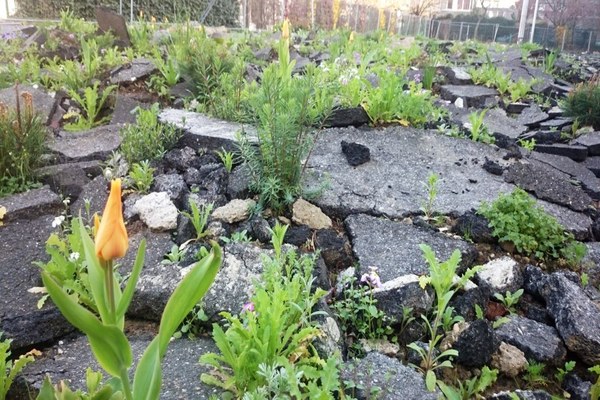
Heatwave aggravated by soil sealing
All of Europe is currently groaning under the heat – and the growing numbers of concreted-over areas are heating up the environment even more. In a background report, CIPRA's Saving:Soils project shows good examples and solutions for the sustainable use of soil and summarises current strategies in the Alpine countries.
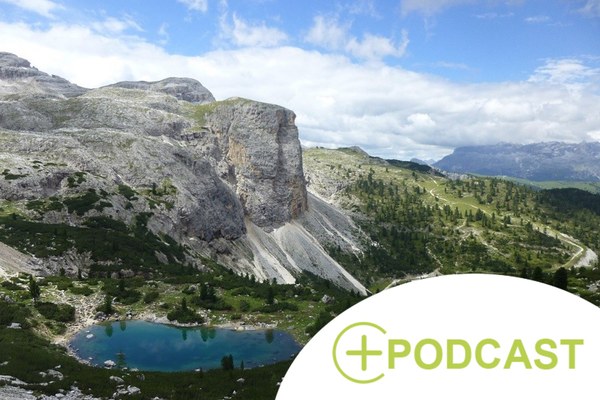
Alpine soils: allies in climate protection
The soils of the Alps make a decisive contribution to climate protection. But intensive land use and rising temperatures are endangering them: not only are they losing their valuable function as carbon reservoirs, but they may even become a source of greenhouse gases themselves.
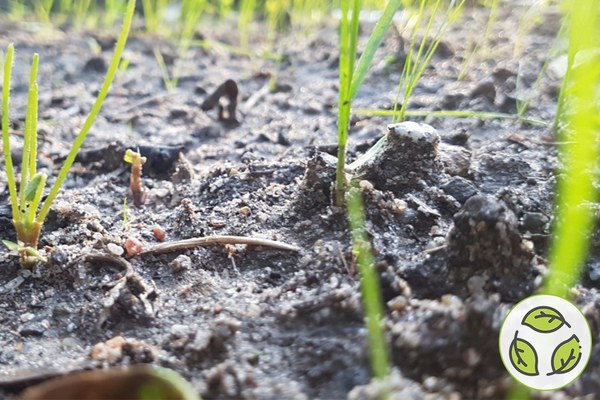
Saving land, saving soil
In the Alps and beyond, land is built up every day and valuable soils are lost. The project "Saving:Soils" shows alternatives and develops solutions together with pilot regions.
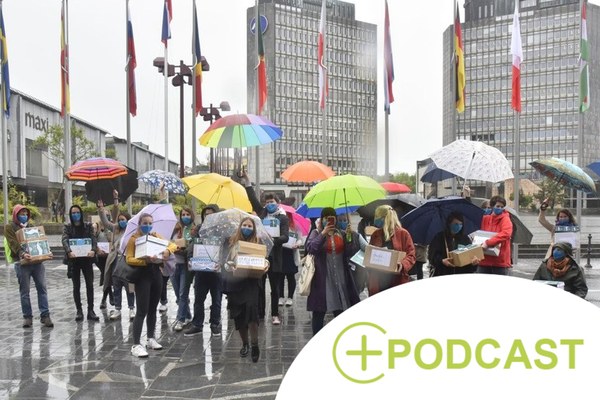
For drinkable water
In a referendum held at the beginning of July, Slovenia’s citizens voted by a clear majority in favour of preserving the shore and coastal zones. In doing so, they overturned a new law that would also have affected Alpine waters.
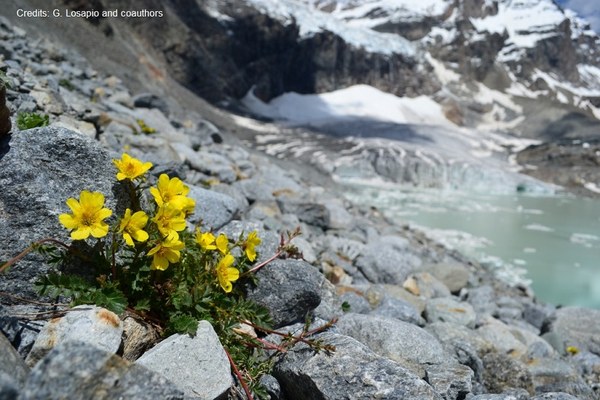
Alpine plants: persistent and endangered
Spiked rue, glacier buttercup, saxifrage: the habitat of such alpine plants is shrinking with the glaciers, as a recent study shows. In addition to climate change, mountain plants are also suffering from nitrogen deposition.
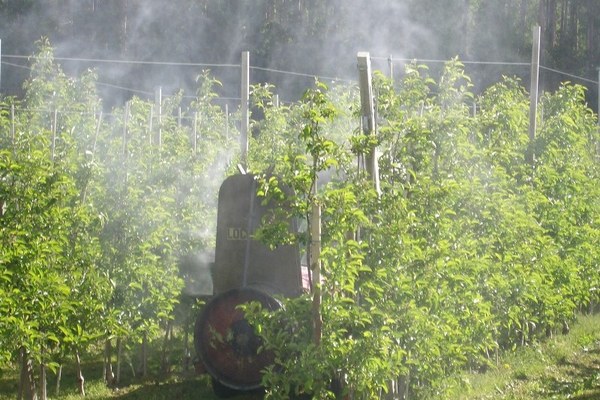
Where pesticides do not belong
On children’s playgrounds, in schoolyards and at the marketplace: researchers from Italy, Austria and Germany detect 32 different agricultural poisons in public places in South Tyrol.
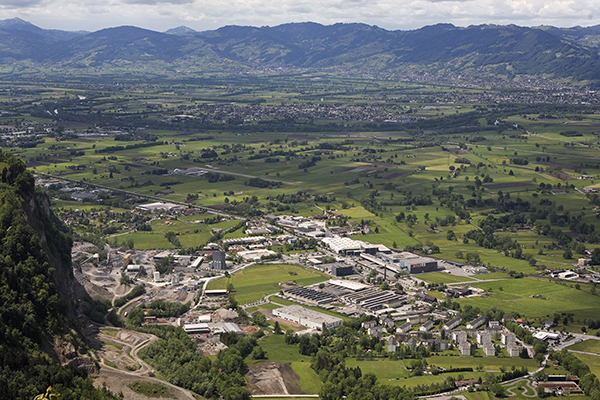
Underestimated soil
We cannot breathe it, we cannot drink it, and yet it forms the very basis of our lives: soil feeds us, is home to us, protects us. Why has its importance hardly been recognised until today?
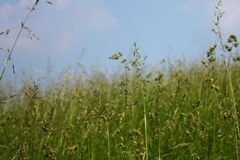
Land for all
Fewer and fewer areas remain untouched by building development. Vorarlberg has therefore seen the establishment of the "Bodenfreiheit" (ground clearance) association, which is now successfully buying up land for public use.
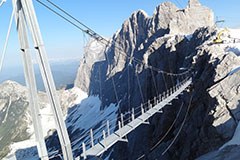
Upgrading the high mountains
Austria's highest suspension bridge, including the "Steps into the Void", is intended to lure tourists to the Dachstein Glacier in a similar way to the recently opened "Du Gouter" luxury hut for walkers on Mont Blanc. The ways in which the Alpine mountain world courts visitors.
Oh...!
… The Swiss Alpine Club (SAC) is this year celebrating its 150th anniversary and has got Mother Nature to build it a table of snow and ice at an altitude of 2,700 metres.

New publication: Mountain Biodiversity and Climate Change
On the basis of papers presented at the International Mountain Biodiversity Conference held in Kathmandu/NP in November 2008, the International Centre for Integrated Mountain Development (ICIMOD) has published a brochure on biodiversity in mountain landscapes and climate change.
Mountain hike for climate protection
On 15 August 2009, some seventy hikers went up to the Goldbergkees glacier on the Hoher Sonnblick in Salzburg/A to draw attention to the impacts of global climate change.
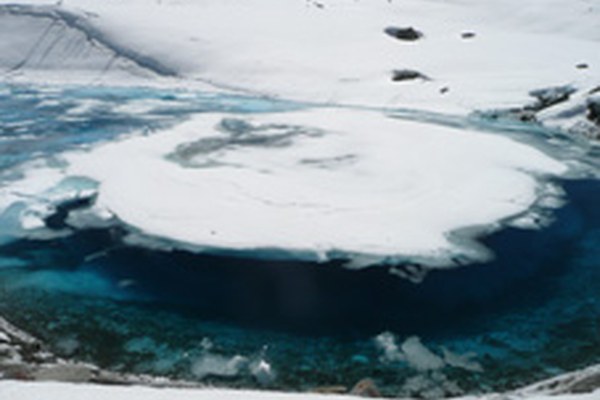
Melting glaciers on your local mountain - what now?
On 24th and 25th September 2009 cc.alps is organising an international conference on the impact of melting glaciers on communities in collaboration with CIPRA Switzerland and the Swiss Foundation for Landscape Preservation in Crans Montana/CH.
International Competition for Mountain Photography and Film
Photographs and films on the subject of Mountain, Landscape and Nature, from the mountains of Lombardy to the world's highest peaks may now be submitted as entries for the "Orobie Film Festival" International Film and Photography Competition.
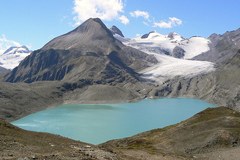
Alpine glaciers melting the fastest
Data from the World Glacier Monitoring Service for 2007 once again underscores what everyone has feared: the world's glaciers are continuing to melt at an alarming rate.
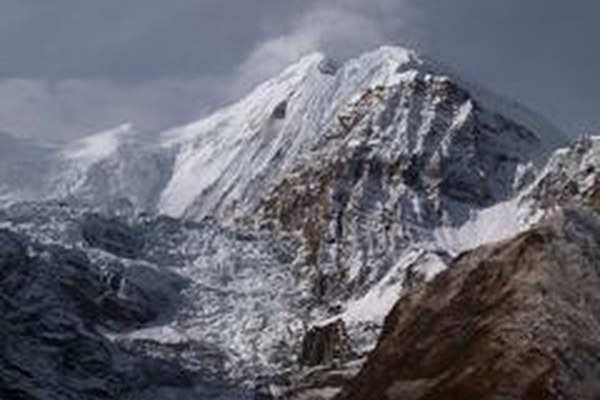
Even high-elevation Himalayan glaciers are melting
Glacier studies by an international team led by Natalie Kehrwald of Ohio State University show that even high-elevation glaciers are suffering from the effect of climate change.
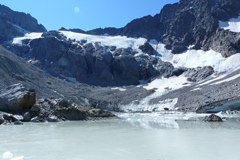
New hypothesis on deep erosion in high mountain regions
Researchers in the south-east of the Tibetan plateau have found that the moraine dams created during glacier fluctuations have over the millennia helped to slow down the erosion effect of large rivers known as downcutting.
Rhône Glacier to melt away by 2100
Scientists at the Écoles Polytechniques Fédérales de Lausanne/CH and Zurich/CH have used complex computer simulations to predict that the Rhône Glacier in the Canton of Valais/CH will have disappeared by 2100.
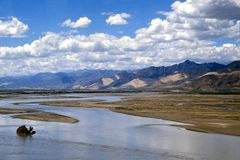
Water resources under threat in the Himalayas
Climate change is threatening the water reserves of East Asia. An estimated 50 percent of the water from the Himalayas comes from glaciers, permafrost zones and the snowmelt.
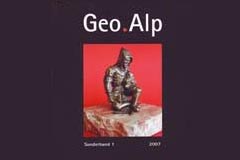
First special edition of the Geo.Alp magazine
The first special edition of the Geo.Alp magazine is dedicated to the papers contributed to the 8th International Symposium on the Cultural Heritage in the Mining and Geo-Sciences, which was held in Schwaz in northern Tyrol/A in 2005.
Dust cover speeds up snowmelt
A new study reveals that dust blown hundreds of kilometres by the wind from erosion zones or dry regions is capable of speeding up the snowmelt in the mountains of Colorado/USA by around one month. Researchers at the National Snow and Ice Data Center in Boulder were surprised not by the fact that the dust-covered snow cover was found to melt more quickly but by the extent to which this occurred in measurements and simulations.
Rainfall can trigger earthquakes
A new study shows causal links between rainfall and earth tremors.
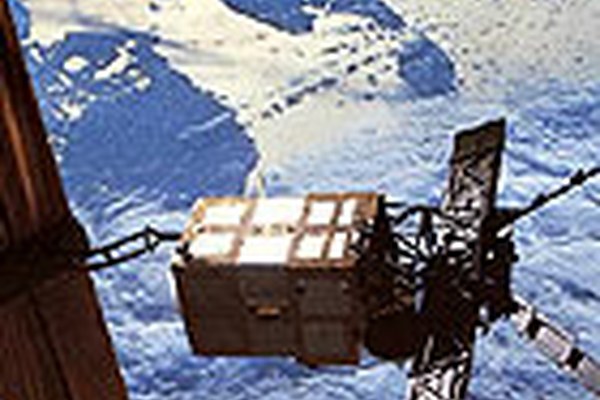
Glacier data from outer space
With the aid of new satellites glaciologists in Zurich are now able to study the world's ice regions with greater precision than before. The results of the data surveys are not encouraging: the Alps' glaciers are melting at a much faster rate than previously thought. Major changes have been noted in an increasing number of glaciers. The Zurich glaciologists are definite in their diagnosis: there is now no stopping the shrinkage of alpine glaciers.
Insufficient snowfall a cause of recessive glaciers
Lower winter precipitation has been one of the causes, along with global warming, behind melting glaciers over the past 150 years. These are the main findings of a study by researchers at the Laboratoire de glaciologie et géophysique de Grenoble/F and the Eidgenössische Technische Hochschule Zurich/CH, published in the Geophysical Research Letters.
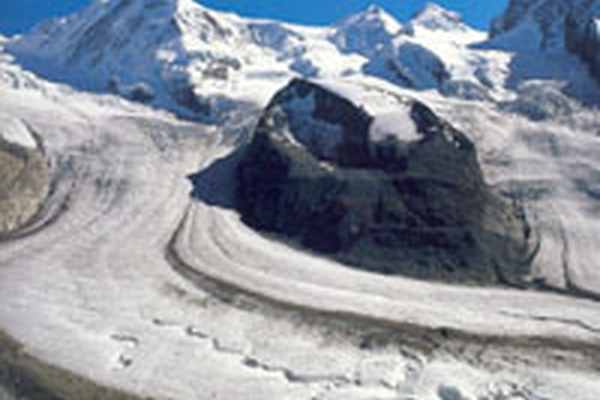
Fewer glaciers, more earthquakes?
According to the results of research carried out by the Universities of Münster/D and Berne/CH, the advance and retreat of glaciers and lakes can trigger earthquakes.
Mount Everest put forward for UNESCO World Heritage in Danger List
The Mount Everest region is at risk from global warming and should therefore be included on the UNESCO's World Heritage in Danger List. Mountaineers and representatives of the environmental group Friends of the Earth submitted a petition to the UNESCO Committee at the end of November.